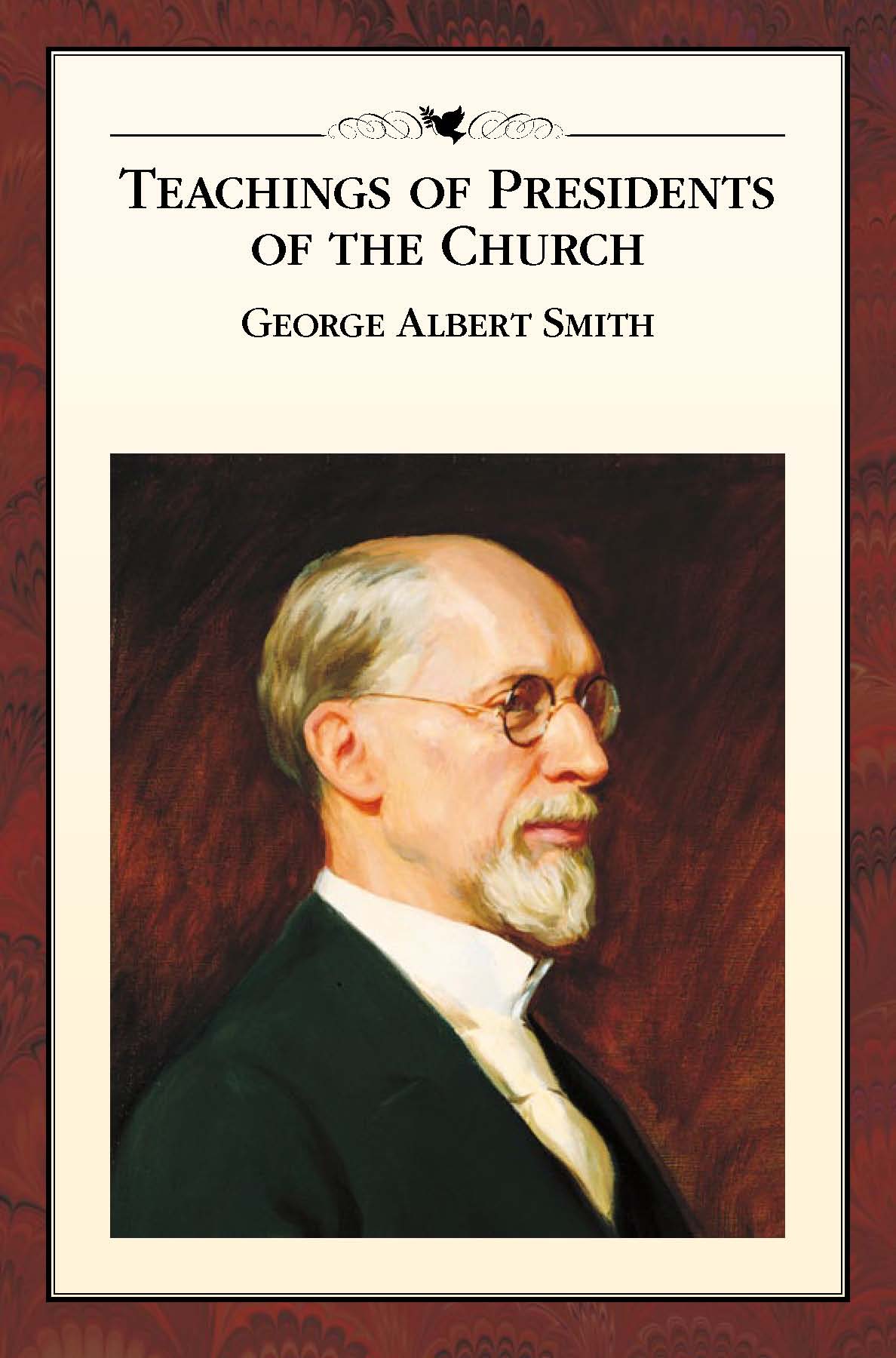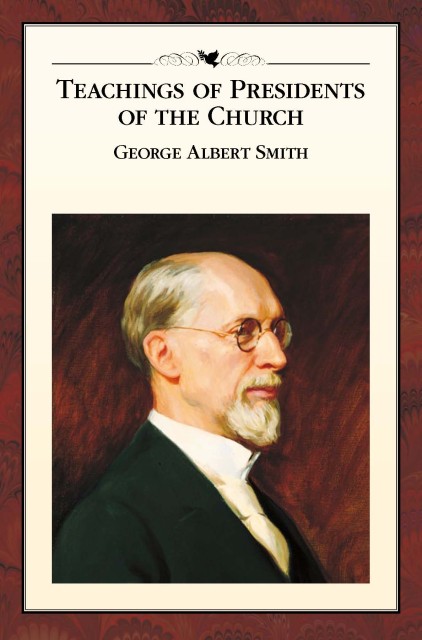
Last year’s manual on George Albert Smith mentions his physical illnesses but not his three-year nervous breakdown.
Some questions have come up in blog comments on the Emma Smith thread about LDS President George Albert Smith and depression.
I’m traveling today, so this will have to be short, but I wanted to provide a link to the 2008 article in the Journal of Mormon History that chronicles George Albert Smith’s mental health struggles. (You’ll have to scroll through the issue to get to p. 113 where that article begins.) In the piece, BYU religion professor Mary Jane Woodger details the three-year nervous breakdown Smith suffered from 1909 to 1912, when he was in his late thirties and early forties. During those years he had to take an unofficial leave of absence from his duties as an apostle, seeking rest cures in California, St. George, and elsewhere.
For five of those months, he did not leave his bed or wear clothes other than pajamas.
Mental health struggles often “run in the family,” and the article looks briefly to the entire Smith clan and their suggested history of mental health struggles. “Debilitating fatigue without an obvious cause and depression can be traced back as far as Asael Smith, Joseph Sr.’s father, and coming forward to John, Joseph Sr.’s brother,” it notes. I’d also point out that David Hyrum Smith (1844-1904), youngest son of Joseph Jr. and Emma, succumbed to serious mental illness after a brilliant career as a missionary, painter, and poet, spending the last 27 years of his life in custodial care in an insane asylum.
According to the article, George Albert exhibited six of the nine diagnostic criteria for a mood disorder. For example, he “either slept poorly or slept constantly.” He suffered from crippling guilt and a loss of any pleasure in life. An uncle, a physician, worried that “it is only a step from nervous frustration to insanity” and urged the apostle to take a long rest. His nephew, he said, should “Dump [his] responsibility for a while before the hearse dumps [his] bones.” George Albert took this advice with the prolonged rest cure, but despite repeated blessings from fellow general authorities, the sweet and patient love of his wife, and even a special prophetic dispensation to drink English beer for his health, he failed to get better.
The crisis point came when he asked the Lord to release him from this life and “take him home and put someone else more suitable in his place.” He was worried that the other apostles had too much of a burden to carry with him being out of commission, and knew that no one else could be called to fill the vacancy in the Quorum of the Twelve until he died. He begged his wife Lucy to pray with him for such a release from life, which she did only very reluctantly.
But then, unexpectedly, he began to get better. The hopelessness began to ease. Having let go of his claim to mortal life, he found that the Lord still had work for him to do.
Reading this story made me cry. To hear of President Smith’s desperation and human struggles made him more inspiring and prophetic to me, not less. Why don’t we tell this story?
I mentioned the JMH article last weekend when speaking in Nauvoo, when our discussion turned to the question of how today’s LDS Church curriculum deals with thorny historical problems of the past. I expressed the view that by mentioning only George Albert Smith’s physical illnesses and not the comorbid mental ones, the 2012 Relief Society/Priesthood manual missed an opportunity to offer comfort and hope to church members who struggle with mental health issues. They and those who love them may be inspired to know how George Albert Smith recovered from this terribly dark place. He was never “cured” or fully without struggle, but he recovered enough to function normally for the last four decades of his life as an apostle and ultimately as president and prophet of the church.
* Mary Jane Woodger, who wrote the JMH article, has also written a biography of George Albert Smith that I have not read yet. It’s on the ever-growing list . . . . although the lone review on Amazon says that unlike the JMH article, the biography does not address Smith’s mental health problems.






